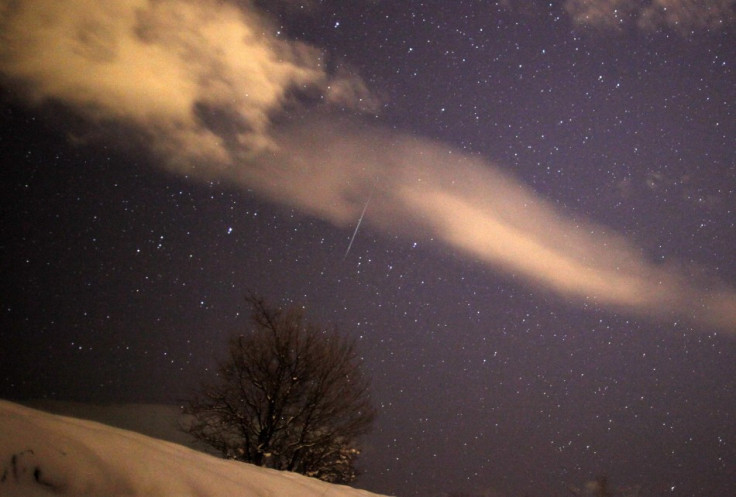Quadrantid Meteor Showers Brighten up January Night Sky

A rare treat is in store for stargazers and UFO spotters as hundreds of shooting stars in a meteor shower, the Quadrantids, passes Earth.
The Quadrantids are made up of space debris that will enter our atmosphere at speeds of 90,000mph before burning up 50 miles above the planet's surface.
The show starts as Earth passes through the debris field of the comet. It will be visible all over the Northern Hemisphere with the exception of Antarctica, although light pollution and cloud cover means that only some observers will see it. Forecasters have warned, however, that many areas will be under cloud.
The Royal Astronomical Society said the meteor shower will be visible in the northeast and east of England, where the skies are clear. Areas which are expected to have no cloud on Friday morning include eastern parts of England, Cheshire and North Wales, as well as some parts of the Midlands.
The best times of viewing are between about 5am and 6am on Friday. This year's show may be slightly more muted because of moonlight.
Experts said the average shower will contain about 100 meteors every hour.
According to Nasa, the Quadrantids come from the EH1 asteroid, which may have part of a piece of comet that broke up several hundred years ago.
"After hundreds of years orbiting the sun, they will enter our atmosphere at 90,000mph, burning up 50 miles above Earth's surface," said a US space agency spokesman.
"[It] presents an excellent chance for hardy souls to start the year off with some late-night meteor watching."
For those who do not fancy braving the weather, the light show can be seen via Nasa's website, which transmits from a camera mounted at the Marshall Space Flight Centre in Huntsville, Alabama.
The Quadrantids derive their name from the constellation of Quadrans Muralis (mural quadrant), discovered by the French astronomer Jerome Lalande in 1795.
© Copyright IBTimes 2025. All rights reserved.






















